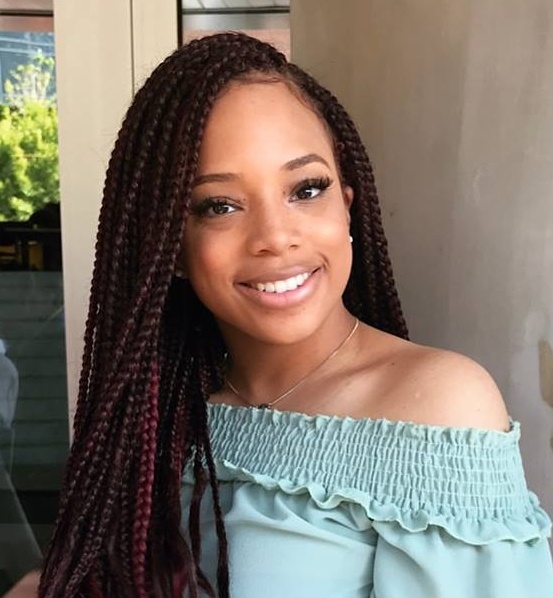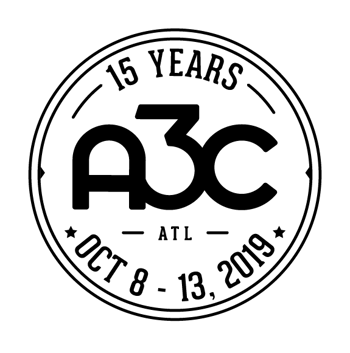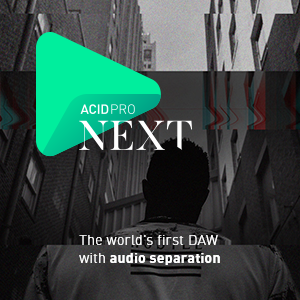Every artist, unknown or well-known, should have a PR strategy incorporated into their marketing plan. Everyday, entrepreneurial artists find themselves in need of a way to get more people tuned into their sound, but have no idea how to make it happen.
Need more advice? Read other chapters of our Artist Guide here.

The Artist's Essential Guide to Hip-Hop is presented by Squarespace, the simplest way to register a domain and create a beautiful website.
Start your free trial today by visiting squarespace.com/A3C. When you’re ready to go live, use offer code A3C17 to save 10% on your first purchase.
In this Post, we'll cover:
- The importance of press
- The business of blogging
- How to create a personal media list
- Tips for reaching out to writers
- What to do after securing a placement
- Things you should know before hiring a PR firm
- Types of press opportunities
- Pro-Tips
Why is Press Important?
Music publicity, like building a fan base, takes time, dedication and effort. With a bit of foresight, organization and grit, you can get the results you need to help advance your career.
Finding new people to listen to your music and care about your career is very difficult without some sort of press coverage. You can and should build a fanbase before you go after press, but targeting writers/bloggers and social media influencers should always be part of your plan. The right post or article can make all the difference, but it’s usually consistent coverage over a certain range of time that advances an artist to the next level.
Here are a couple reasons why press is important.
- Avid music listeners follow music sites
Not all fans are created equal. The most die-hard music fans that buy tickets, spend money on merchandise and tell their friends about new music also read music blogs. You want to reach avid music fans and listeners.
- Press reads press
If you find your way onto one buzzing music blog, that link alone will help you get on others. It’s the snowball effect: bloggers are always looking for the latest releases on other sites .
- A stamp of approval
Media sites are still tastemakers and gatekeepers. Consistently landing content on popular music sites is crucial for securing other opportunities with labels, brands and shows. If you want to present yourself to a new fan, a link to a recent article or featured post is going to attract more attention than your website or social media links.
It’s an immediate... “Oh cool, that site is a fan of him/her”
The Business of Blogging
Why should you care about the business of blogging and websites? Like it or not, you (the artists) is dead smack in the middle of it. If you don’t understand the relationship behind the artist and media, then you won’t understand how or why you provide value to the website AND vice versa.
Websites survive on traffic. It’s no secret they make money on paid advertising, and the more eyeballs they have on their content, the better. Sometimes a group of smaller sites will form larger networks in order to sell more advertising dollars, negotiate better rates and sell custom partnership packages.
Artist’s content drives traffic to the websites. Organic search, direct links and social media account for nearly ALL of the traffic to a website, and usually, in that order. You can actually research all of this on www.SimilarWeb.com.
A sad truth for most up-and-coming artists is that their content will most often be scrolled over. Even after securing a placement, you may not get the views or streams you were hoping for. Press can help you grow your fanbase, but it generally doesn’t happen with the first few posts. A fan usually sees/hears an artist's name 10 times before they become interested enough to listen or watch.
There is a very symbiotic relationship between music blogs and the artists they feature.
If you can drive a lot of traffic, websites need you more than you need them.
If you can’t drive traffic, websites are helping generate interest and exposure.
Think of this analogy…
If an artist that can bring fans to a venue for a show, then they are valuable to the promoter.
If an artist can’t bring any fans to a venue for a show, than the promoter is helping the artist get more exposure.
Weather online or in person, the artist’s value is determined by how many people they can get to a location or to click on a link… it’s that simple.
5 steps to creating your personal media list
You won’t have any success without doing your homework. You can not replace the upfront research it takes to finding the right sites and writers. Follow these steps and you’ll be on your way to getting press placements on your own:
- Make a spreadsheet. Always stay organized. Keep your media contacts in one place and continue to maintain, update and build your relationships.
- Google 5-10 different artists you respect that might have a similar fanbase. They should be further along in their career. When you Google, be sure to look under the news tab and see what recent news the artists have gotten. Don’t bother looking past the third page results, no one else does.
- Add all of the websites and the writers of the articles to your spreadsheet. You should now have a list of 100+ highly targeted media outlets and writers. You’ll probably know a handful, or maybe most of the sites, but hopefully you’ve found some new sites that you didn’t know of… and these are the sites you’ll want to start with.
- Add all of the writers twitter handles to your spreadsheet. You may notice some writers write for more than one outlet. You’ll also notice that some writers are freelance while others work directly for the media outlet. Make note of their relationship to the media outlet, it’s important when you’re reaching out.
- Go through your list of websites and get their (Music Submission, News, Music, Writer or Editor) contact email. Do not email their business or advertising emails. Their contact emails should be in their nav bars or in the website’s index.
For $0 and only a few hours, you now have the names and emails of every trafficked site that may post your videos or music. You also have the writer's name and twitter accounts that may like your stuff.
Tips for reaching out to writers
Your fan base and ultimately the quality of your content will be the most important factors writers will consider before posting your content. However, you can increase your chances by reaching out to media correctly. Here are a few tips:
- Be personal and precise
Include the name of the media outlet (and name of the writer if you have it) in the body of your email. Introduce who you are and get to the point as quickly as possible or you’ll lose them. Include all of the necessary links and attach artwork.
- The importance of great graphics
Before someone can click play, they have to see something. Great graphics can make all the difference in the world. In addition to getting more press placements, you’ll also receive more views, clicks and likes once your content is posted.
- A short summary of highlights
Here come the accolades. If you have a large social media following, boatloads of Soundcloud streams, recent high quality media coverage, a popular YouTube video or just signed to a respected label, make sure you seamlessly weave in a few impressive details that outline why the publication should be interested
- Your EPK
Writers and editors are extremely busy people who are constantly working. They get hundreds of emails a day from publicists and artists. Therefore, you should never make a writer work to get any information they may need. An electronic press kit will help organize your information so they can immediately access your music and quickly get a sense of who you are.
And just in case these things aren’t already in your EPK, every press release should include:
- Your music and/or links to it
- A bio or background on the artist
- High-res photos and album artwork
- Your website and social profiles
- Say “Thank you”
Editors work ‘round the clock, so always thank them for their time. As you wrap things up, let them know when you’re looking to secure the placement and that you’ll be following up prior to that date.
Bonus: For an in depth how-to, check out The FADER’s genius step-by-step guide to getting your music posted on websites.
You’ve got the post you wanted, NOW WHAT?
If you’ve finally gotten a post from a website that you’d like to build with, promote the hell out of your post. If a site posts your music, and it doesn’t generate any traffic, they’ll remember.
If you don’t want to have a one and done post on the website, you’ll need to support the post like crazy… and I’m not just talking about RTing the post, though you’ll want to do that too. Here are a few other tips:
- Tag the site in every social media post.
This shows them you’re supporting them and they’re more likely to see those posts. They may also share or RT which is a double win.
- Thank them personally, publically and privately
Email and/or DM the writer directly and thank them. This is the perfect time to build the relationship. You also want to thank them publically by tagging the writer on IG and Twitter.
- Paid advertising
This is the perfect time to invest $100 into your career. Paid Advertising is a whole new topic we’ll cover later, but this is a great way to drive traffic to your latest content, highlight the great press placement to fans (and potential fans) and show your value to the media outlet. It’s a win-win-win.
Things you should know before you hire a PR firm
Many artists that want to get press start by hiring a PR firm. On the surface this feels right, but isn’t the right approach. Here are tips that the best people in PR will openly tell you…
- You’re probably not ready to work with a professional PR representative before you’re already getting fairly consistent press. A PR professional is a great asset to help with strategy and acquire placements after you have momentum, but rarely will a PR firm help create the momentum. You have to lay some groundwork first.
- PR professionals work on monthly retainers and can’t (and shouldn’t) promise any coverage. There are no refunds if no placements are acquired. The cost can range significantly depending on the firm and scope of work, but be prepared to spend over $1,000/month.
- You have the right to ask a lot of questions. We recommend asking:
- How many clients do you currently have?
- Are you currently working with any other artists? If so, who?
- What recent placements have you gotten?
- What are your specialties?
- What do you expect the press coverage will be?
- What would your process and strategy be?
- Before you hire a stranger, do you have a friend that works in PR or has experience pitching to press? See if they’ll help you for free for a few months. If they prove that they do great work and can be an asset to your team, maybe consider putting them on a monthly payroll.
- Do not sign an agreement longer than 3 months, and pay monthly. You should give the relationship some time to bear fruit, but you will also be able to tell if the relationship is going to work after 3 months.
- Only hire a PR firm when you have bunch (not just one song or video) of amazing content and/or newsworthy stories. The content should be so good that the PR firm is excited about working with you. A PR firm is ONLY as good as the content you provide them. Here are examples of great content.
- You have an a few awesome features on your upcoming project
- You have collaborated with several a-list producers on your upcoming project
- You have a few AMAZING music videos that has been shot/edit by very talented people
- You are going on a national tour with a popular artist
Types of Press Opportunities
PR has evolved beyond the standard outreach letter to blogs and media outlets. It’s important to continue to research new trends and identify best practices for obtaining valuable press coverage. Today, PR entails a lot more than dishing out a few press releases here and there. When you think about creating a press strategy, keep the following ideas in mind:
- An exclusive premier: When the time comes to drop a new track or release album it’s always in your best interest to seek out a partnered site to premier the content. Premiering content on a site is one of your the best chances at landing a placement. By offering exclusively to a media outlet, you heighten value, and ultimately, their interest.
- Featured posts: A great way to build a buzz around a recent endeavor is to seek out as many feature articles as possible on websites with similar audiences. Whether they decide to write your entire life story or keep things short by simply posting a link to your music, an article featuring Y-O-U is always a win.
- Social Sharing: Taking advantage of someone else’s social media following is a quick & easy way to get additional eyes and ears on your content. Prior to an upcoming release, try reaching out to social influencers with significant or shared followings. Ask them to share your content, and try to offer them something in exchange.
- Interviews: Done in person, via skype or on the phone, an in-depth conversation can be the perfect way to insert a few shameless plugs. Depending on who you’re dealing with and the story you’re looking to tell, you’re sometime better off selling yourself than your music.
- Brand Collaborations: Landing press can be increased significantly with the right brand collaboration. An artist with a fanbase has something to offer a clothing line or lifestyle brand that’s looking to reach new potential customers. If there’s a natural fit, the right creative partnership can make great news.
Pro-Tips
1. Find out is the website is the real deal.
You want to walk before you run. There isn’t a direct correlation, but you can use traffic numbers to determine (roughly) how hard it is to get a placement on that site. You can use Similar Web (for free) to determine:
- Number of page views (is this site worth your time)
- Monthly visits over the last 6 months (is the site growing)
- Where in the world (literally) is the traffic coming from (is the audience in the countries you’re targeting)
- Similar websites (great for making your list of potential websites)
- Global rank (power ranking for websites)
- Audience breakdown (great for finding out if this is the right site for you)
2. Never ever pay for a post
The short reason, you can’t pay for a media post that is worth paying for. Any blog/website that has significant traffic and a decent amount of readers didn’t get that way by getting paid to post music. They rely on their ear and quality taste in music. You’ll never get a return on your investment. Just don’t do it!
Need more advice? Read other chapters of our Artist Guide here.
The Artist's Essential Guide to Hip-Hop is presented by Squarespace, the simplest way to register a domain and create a beautiful website.
Start your free trial today by visiting squarespace.com/A3C. When you’re ready to go live, use offer code A3C17 to save 10% on your first purchase.




